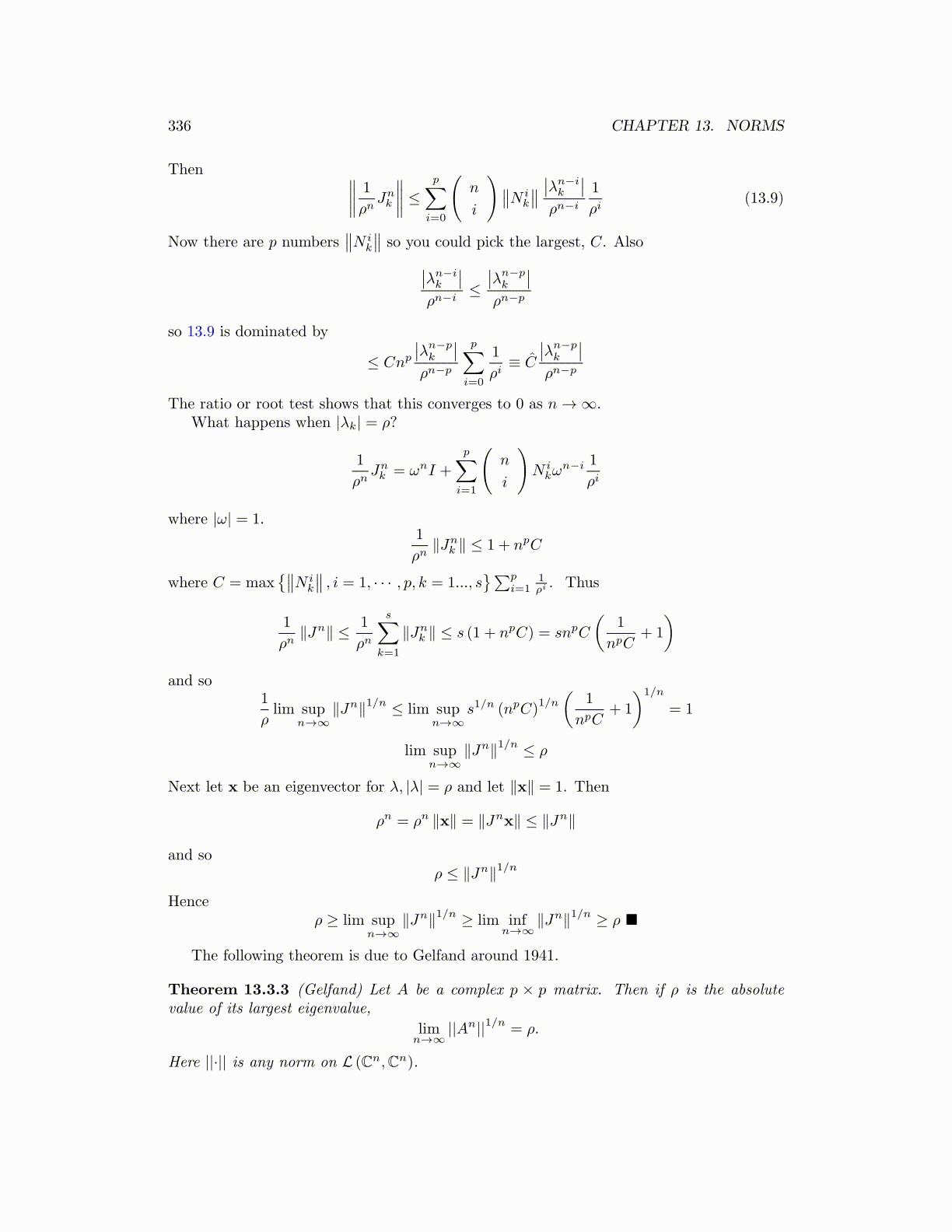
336 CHAPTER 13. NORMS
Then ∥∥∥∥ 1
ρnJnk
∥∥∥∥ ≤p∑
i=0
(n
i
)∥∥N ik
∥∥ ∣∣λn−ik
∣∣ρn−i
1
ρi(13.9)
Now there are p numbers∥∥N i
k
∥∥ so you could pick the largest, C. Also∣∣λn−ik
∣∣ρn−i
≤∣∣λn−p
k
∣∣ρn−p
so 13.9 is dominated by
≤ Cnp∣∣λn−p
k
∣∣ρn−p
p∑i=0
1
ρi≡ Ĉ
∣∣λn−pk
∣∣ρn−p
The ratio or root test shows that this converges to 0 as n→ ∞.What happens when |λk| = ρ?
1
ρnJnk = ωnI +
p∑i=1
(n
i
)N i
kωn−i 1
ρi
where |ω| = 1.1
ρn∥Jn
k ∥ ≤ 1 + npC
where C = max{∥∥N i
k
∥∥ , i = 1, · · · , p, k = 1..., s}∑p
i=11ρi . Thus
1
ρn∥Jn∥ ≤ 1
ρn
s∑k=1
∥Jnk ∥ ≤ s (1 + npC) = snpC
(1
npC+ 1
)and so
1
ρlim sup
n→∞∥Jn∥1/n ≤ lim sup
n→∞s1/n (npC)
1/n
(1
npC+ 1
)1/n
= 1
lim supn→∞
∥Jn∥1/n ≤ ρ
Next let x be an eigenvector for λ, |λ| = ρ and let ∥x∥ = 1. Then
ρn = ρn ∥x∥ = ∥Jnx∥ ≤ ∥Jn∥
and soρ ≤ ∥Jn∥1/n
Henceρ ≥ lim sup
n→∞∥Jn∥1/n ≥ lim inf
n→∞∥Jn∥1/n ≥ ρ ■
The following theorem is due to Gelfand around 1941.
Theorem 13.3.3 (Gelfand) Let A be a complex p × p matrix. Then if ρ is the absolutevalue of its largest eigenvalue,
limn→∞
||An||1/n = ρ.
Here ||·|| is any norm on L (Cn,Cn).